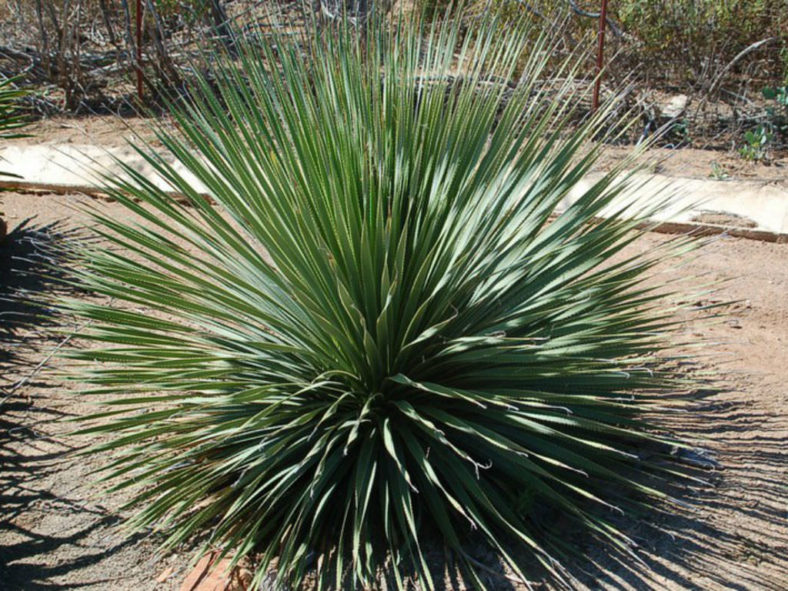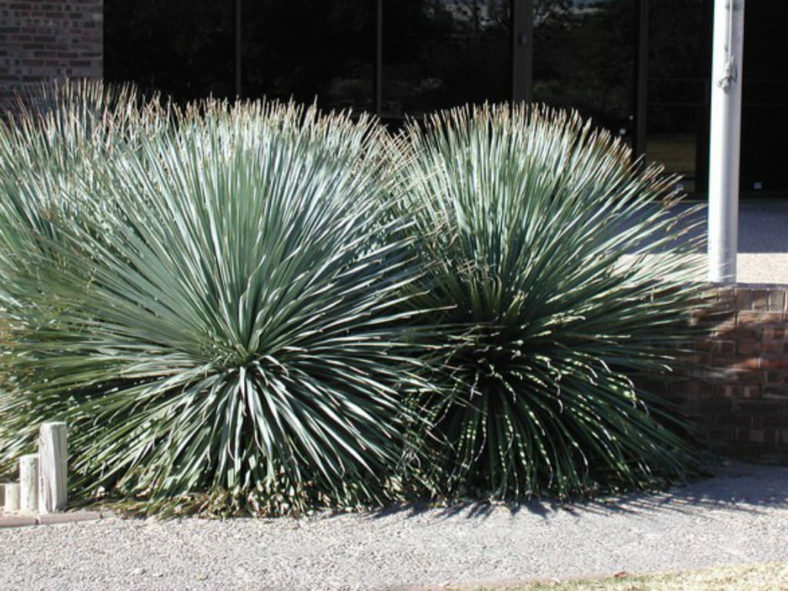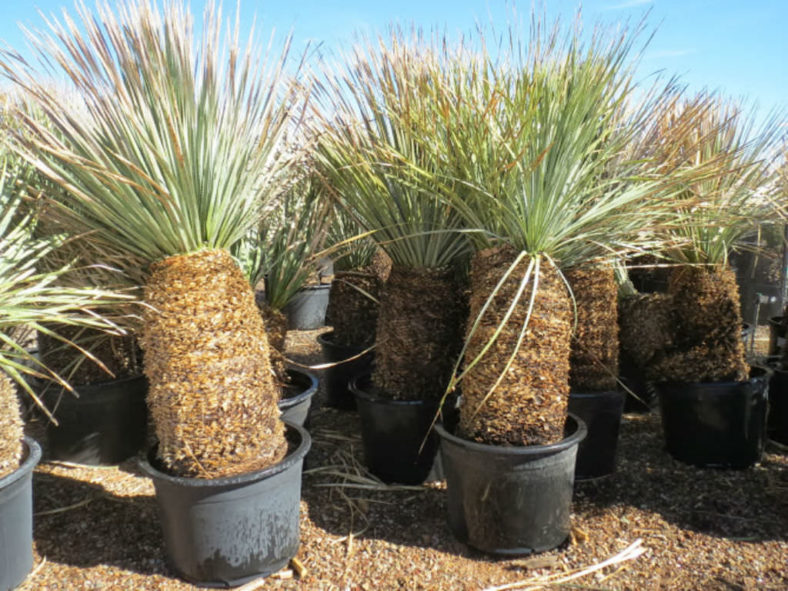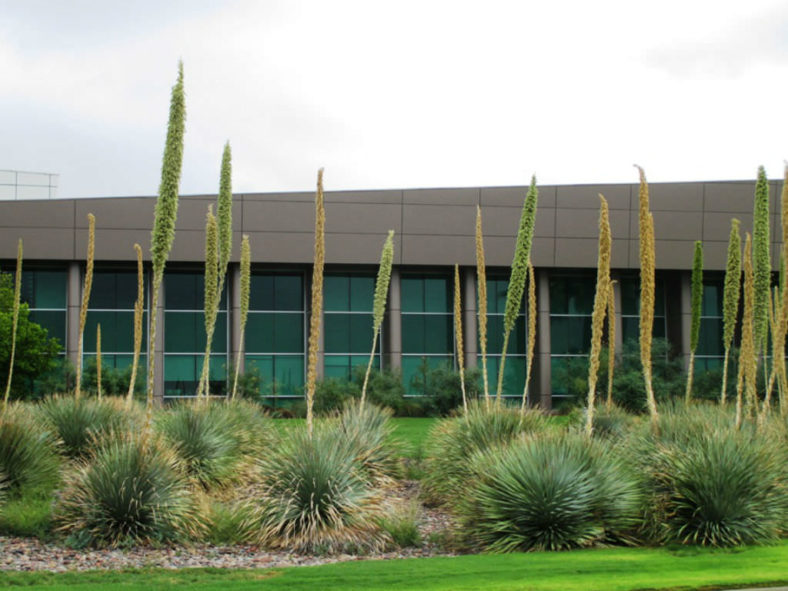Scientific Name
Dasylirion wheeleri S.Watson ex Rothr.
Common Name(s)
Blue Sotol, Common Sotol, Desert Spoon, Grey Desert Spoon, Spoon Flower, Spoon Yucca
Synonym(s)
Dasylirion wheeleri var. wheeleri, Dasylirion wheeleri var. wislizeni
Scientific Classification
Family: Asparagaceae
Subfamily: Nolinoideae
Genus: Dasylirion
Origin
Dasylirion wheeleri is native to the United States (southern Arizona, New Mexico, and western Texas) and Mexico (Sonora). It grows in rocky hillsides and grasslands at elevations that range from 2,000 to 5,000 feet (6,560 to 16,400 m).
Description
Dasylirion wheeleri is a robust, long-lived succulent with strap-shaped, whitish or bluish-green leaves that radiate from the center of an often reclining trunk, forming a spherical rosette. The trunk can grow up to 6 feet (1.8 m) long. The leaves are narrow, have a spoon-shaped base and sharp, serrated margins, and can grow up to 3.3 feet (1 m) long. The leaf bases remain on the trunk, giving it a rough appearance.
The tiny flowers appear in stout, plume-shaped spikes that rise from the center of the rosette and grow up to 16.4 feet (5 m) tall in early summer. This plant is dioecious, having the male and female flowers on separate plants. Therefore, the color of the flower determines the gender of the plant, mainly white-colored for males and purple-pink for females. Flowering occurs only every few years. After flowering, the rosette produces offsets at the base of the inflorescence.

Hardiness
USDA hardiness zone 7a to 10b: from 0 °F (−17.8 °C) to 40 °F (+4.4 °C).
How to Grow and Care
Dasylirions are slow-growing, carefree, durable, drought-tolerant plants. However, they grow faster if watered well (don't water the crown, though they rot easily). These plants should be placed in a sunny, well-drained area with additional summer water in dry climates in the garden.
These make great specimen plants for xeriscape gardens and blend well in tropical or arid gardens. Small plants are relatively inexpensive, but larger ones are expensive. They make excellent potted specimens, and their symmetrical form provides a striking focal point.
They thrive best in full sun but can be grown with some shade and humidity. Plant in very fast-draining soil and provide little or no water in winter. Treat like a succulent. They are best where winter temperatures stay above 50°F (10°C) but can take some periods of frost. Plants in containers can be moved inside during longer cold spells.
See more at How to Grow and Care for Dasylirion.
Links
- Back to genus Dasylirion
- Succupedia: Browse succulents by Scientific Name, Common Name, Genus, Family, USDA Hardiness Zone, Origin, or cacti by Genus
Photo Gallery
Click on a photo to see a larger version.


